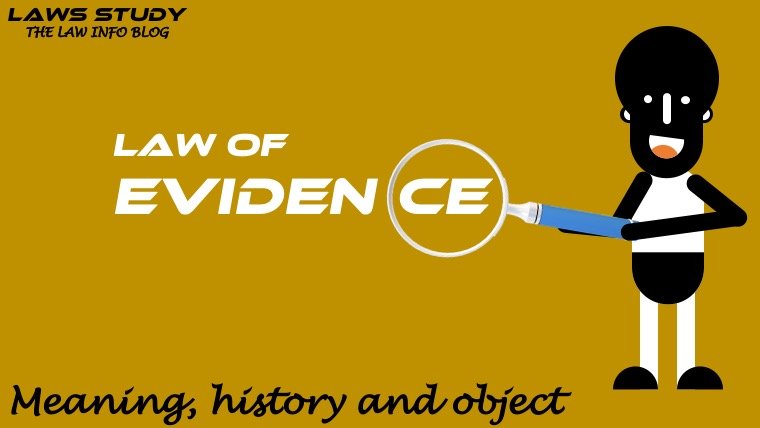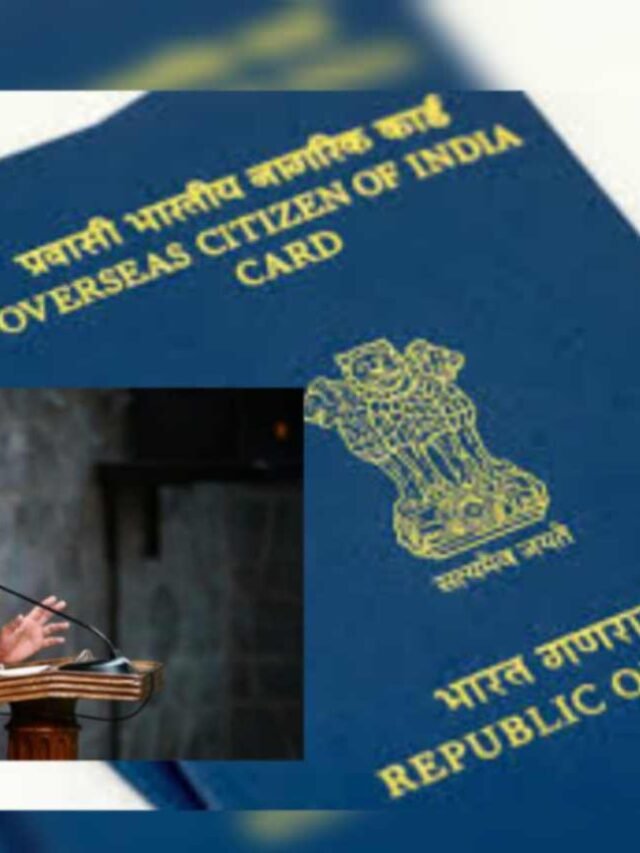Meaning, history, and object of the law of evidence: This issue was not systematically or extensively addressed in India before the Indian proof act was passed. English rules of proof were applied in the presidential city of Calcutta, Bombay, and Madras.
However, there were no set rules for proof outside of those presidential towns. The Mofussil Courts have applied vague, indefinite, and occasionally also customary law rules in some parts of the country. There are, however, no particular or fixed rules. This significant legislative branch has not been administered satisfactorily.
History of the Law of Evidence
It applied to all the courts in British India, when an act was taken on this subject in 1835. It was the first step. Then another Act on this subject was passed in 1855 and while there were no comprehensive rules in it, there were some important and valuable provisions.

Especially in legal circles, it became evident that the state of this branch of law was flowing and urgently needed reforms. It also provides the state of the law, stating that, as it existed at that time, the entire Indian law of proof could be divided into three parts: one by express acts, the other by judgment, and the third (and largest) portion that was unresolved and cannot be classified under any other two parts.
Consequently, A decision was taken to adopt some formal law in this field. The need to establish the English law, which was widespread on the basis of the experience and learning of the English judged, with changes as would be necessary for the specific conditions in that country, appeared to be a need for the day. A draft resolution on the subject was therefore prepared by the local authorities in 1869 and distributed to them. However, after its first reading in the parliamentary assembly, this bill was not seen in the light of day. The local authorities at the time held the unanimous opinion that this bill was inappropriate for the country’s needs.
Then a new bill was presented, finally passed by the Indian Evidence Act of 1872. This act is based mainly upon the English law of proof and the many rules and principles found in the law of the jungle of England, though in a very narrow compass, have been classified and amended. This law branch is undoubtedly very broad in scope, and the difficulty of compressing this wide field into just one hundred and sixty-seven sections can be appreciated. The Act has been in force for over 100 and 25 years and there has been valuable legal precedent in this area.
Definition of evidence
The definition of “evidence” is “to clearly show, prove or ascertain, This is derived from the Latin term “evident”
The principles of Evidence Law are rooted in two fundamental axioms:
- In all civilized nations around the world, courts should only consider facts directly related to the subjects in dispute. This means that evidence should be admitted based on its rational and logical relevance to the case at hand.
- Evidence that holds rational relevance is generally admissible, except when a paramount rule prevents the admission of certain types of evidence, such as confessions made by a client to their advocate.
It’s important to acknowledge that, even in modern times, the unfortunate practice of torture has not been completely eradicated. There are still instances where harsh methods are employed to gather evidence, even in different parts of the world. These methods are in stark contrast to the rational rules of evidence. Historically, in various regions, trials have been conducted using highly irrational means, including practices like trial by ordeal involving hot iron and boiling water.
Object behind the Law of Evidence
Rules of evidence are designed to assist the courts in the establishment of the truth, to prevent long-term investigations, and to prevent confusion in the mind of judges resulting in the excess admittance of evidence. One must realize that if all circumstances that could tend to shed light on the matter in question are allowed to happen, proceedings will be long-lasting and intolerable.
Therefore, the main purpose of the law of proof is to limit the investigation by courts to the limits prescribed by public convenience. The fact that every circumstance, on either side, has a remote and conjectural proof power, the precise quantity of which could only be ascertained through a lengthy study and a determination of collateral issues, would now nullify this objective entirely. Therefore evidence is to be rejected which tends to distract the courts’ attention and waste their time.
following analysis of the act will reveal three main principles
- Evidence must be relevant to the issues at hand.
- Hearsay evidence is not admissible.
- In every case, the best evidence must be presented.
Evidence is governed by Lex Fori
It should be noted that evidence is governed by lex fori, i.e., the forum law or the court of law where the case is brought before the Court. Where a witness has competence, whether certain matters need to be proven in writing, and whether there is evidence proof or not, the law of the country where the problem arises, which is where the remedy is sought and where the tribunal sits to implement it, shall determine whether or not it is competent. [Bain v.s w.& f. rail co.(1850 3 H.L.C.I.)].
As a result, if it is desired to prove a foreign document in an English court, even if the document can be proved in its country of origin by producing a copy, it cannot be done in the English court unless the circumstances are such that the copy is admissible under English law.[ brown vs. Thomton , (56 AD & EI 185)].
Whether Indian evidence act is exhaustive or not?
The Indian Evidence Act is not considered exhaustive because it does not purport to encompass all the rules of evidence. While it provides a comprehensive framework for evidence in India, it does not cover every possible aspect or scenario. In cases where the act is silent or lacks specific provisions, Indian courts have the authority to refer to relevant principles of English common law for guidance in interpreting the act’s sections. However, it’s important to note that any such principles from English law must align with the provisions of the Indian Evidence Act, and if there is a conflict, the act takes precedence.
If the evidence rules in civil and criminal cases are the same?
The act governs all judicial proceedings, whether civil or criminal. In general, whether the proceedings are civil or criminal, the rules of evidence are the same. Certain provisions of the act, however, (for example, the doctrine of estoppel) apply only in civil proceedings. Similarly, some provisions of the act (for example, those relating to confession) would apply only in criminal proceedings.
Frequently asked questions:
What are the Rules of Evidence?
The Rules of Evidence are a set of legal principles and rules that govern the presentation, admissibility, and evaluation of evidence in court proceedings. They are designed to ensure fairness, accuracy, and reliability in the judicial process.
What types of evidence are typically considered in court?
Courts consider various types of evidence, including testimonial evidence (witness statements), documentary evidence (written records and documents), physical evidence (objects, photographs), expert testimony, and demonstrative evidence (charts, diagrams).
Can hearsay evidence be admitted in court?
Hearsay evidence, which is an out-of-court statement offered for the truth of the matter asserted, is generally not admissible. However, there are exceptions to this rule, such as statements made under certain circumstances, like dying declarations or business records.
What is the burden of proof in a legal proceeding?
The burden of proof refers to the responsibility one party has to prove the facts of the case. In criminal cases, the prosecution bears the burden of proving guilt beyond a reasonable doubt. In civil cases, the plaintiff typically has the burden of proving their case by a preponderance of the evidence.
























